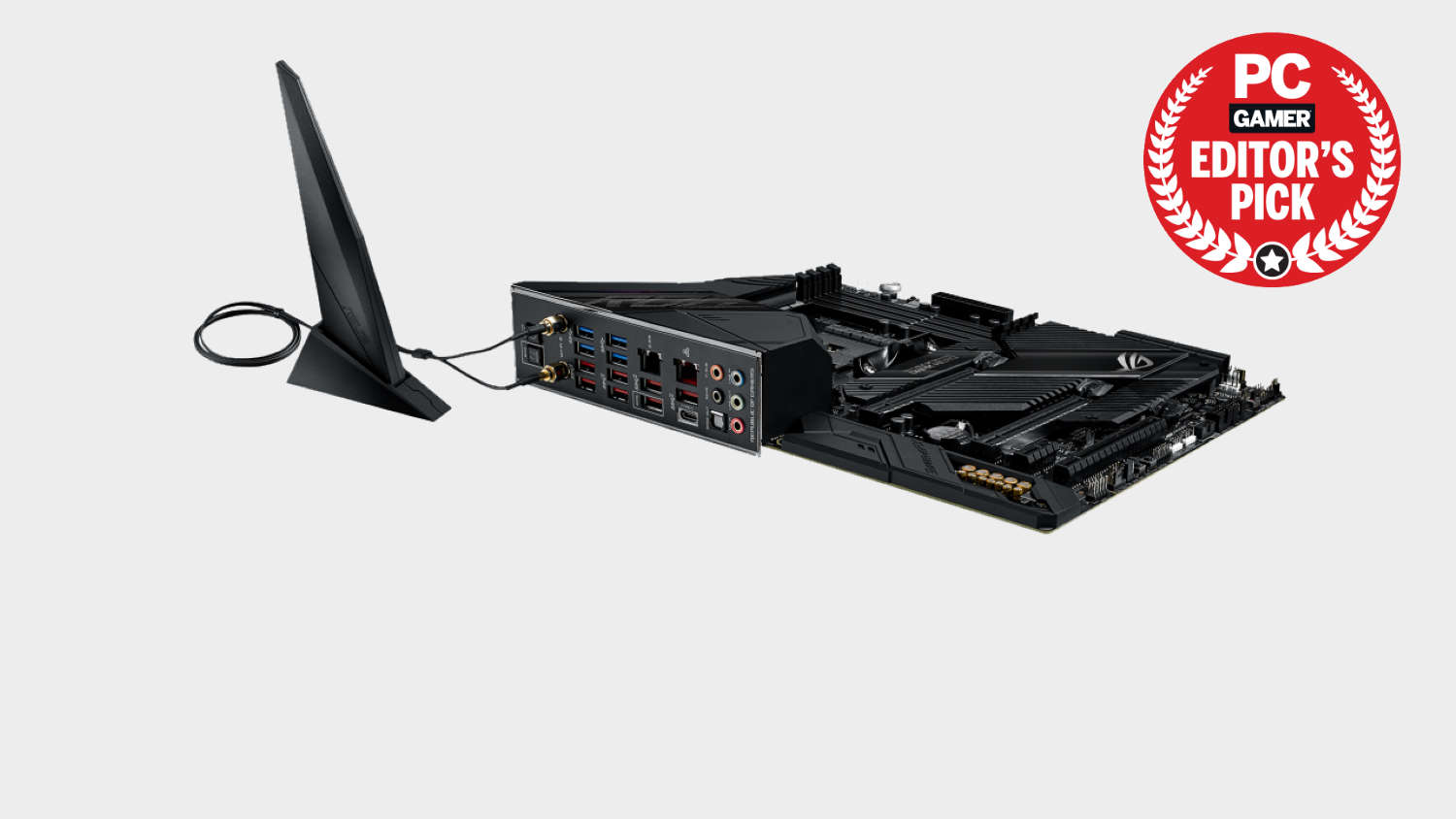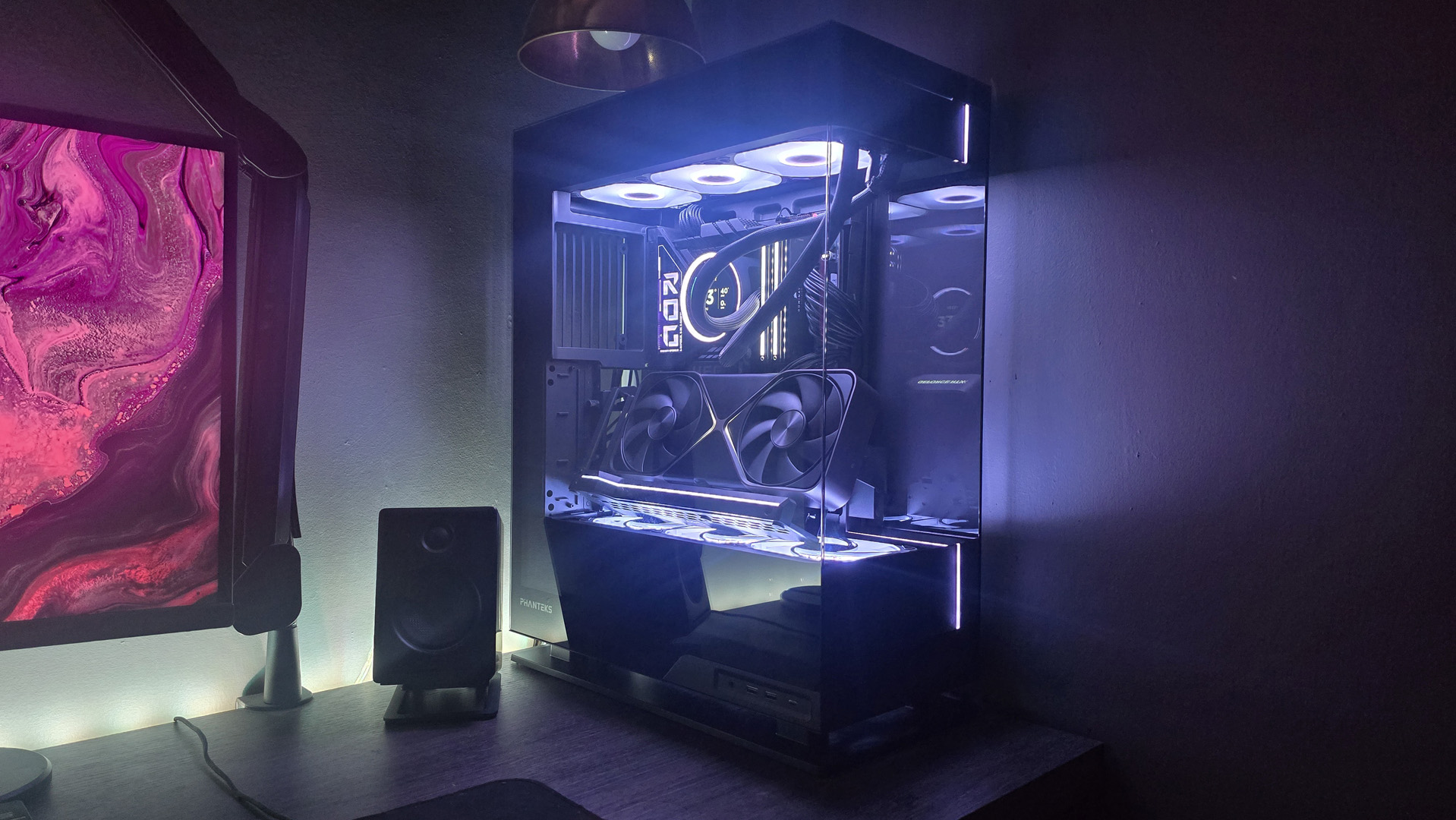Our Verdict
If you're after a stable and refined motherboard to extract every last drop of performance out of your CPU and memory, this is the board for you.
For
- Clean design
- Great performance
- No chipset fan
Against
- $400 is still a lot for a motherboard
PC Gamer's got your back
There isn't a new chipset debuting with the AMD Ryzen 5000 CPUs, but Asus' ROG Crosshair VIII Dark Hero wants to be the last AM4 motherboard you'll ever need.
Debuting back in September 2016, AMD’s AM4 socket is now well and truly into the twilight of its many chaptered career. Since it appears there won’t be an X670 chipset, it’s likely that X570 will be the last high end AM4 chipset before the switch to a new socket for Zen 4 processors with DDR5 memory support.
With that in mind, Asus is using this window to release a refreshed X570 motherboard: the ROG Crosshair VIII Dark Hero. It incorporates all of the 4+ years of BIOS updates, PCB, and electrical layout tweaks into what should be a mature and refined package. Importantly, unlike early X570 boards, the Dark Hero was designed with Zen 3 processors actually on hand during the design phase.
That means there’s every chance that the Crosshair VIII Dark Hero will be among the best, if not the best X570 motherboard for Ryzen 5000 CPUs.
The Dark Hero features a rather subtle design. Some might even say it’s a little bland. Perhaps we have reached ‘Peak RGB’ with recent motherboards being a little more discrete with their RGB implementations. It’s also unusual that there’s not a Crosshair VIII Apex or Extreme, especially when Gigabyte and MSI have boards priced well above the Dark Hero.
A $400 USD motherboard can never be described as cheap, but compared to the exorbitant prices of the MSI Godlike and Gigabyte Aorus Extreme, it certainly feels more affordable.
The layout of modern ATX boards tends not to vary too much these days. The primary M.2 slot is sensibly located above the PCIe slot. The second slot at the bottom also features a heatsink. The sockets are easy to access without having to remove the entire heatsink assembly.
Also notable: No chipset cooling fan! Hooray!
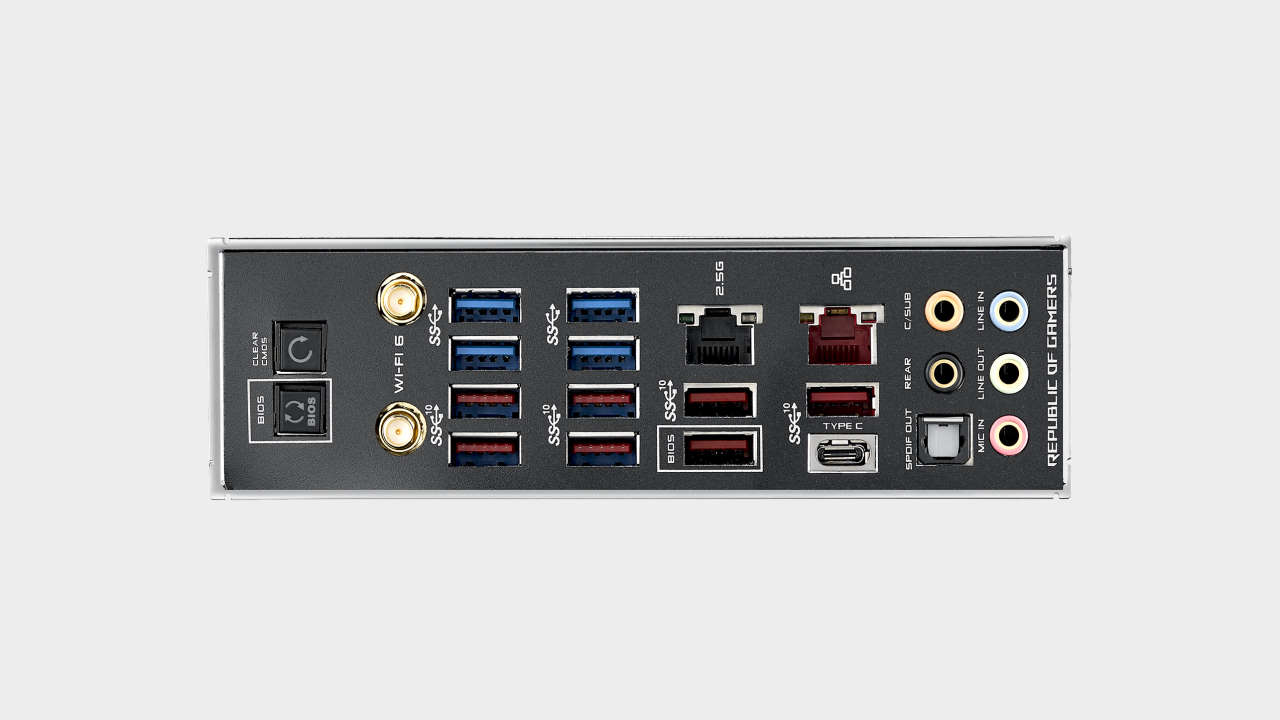
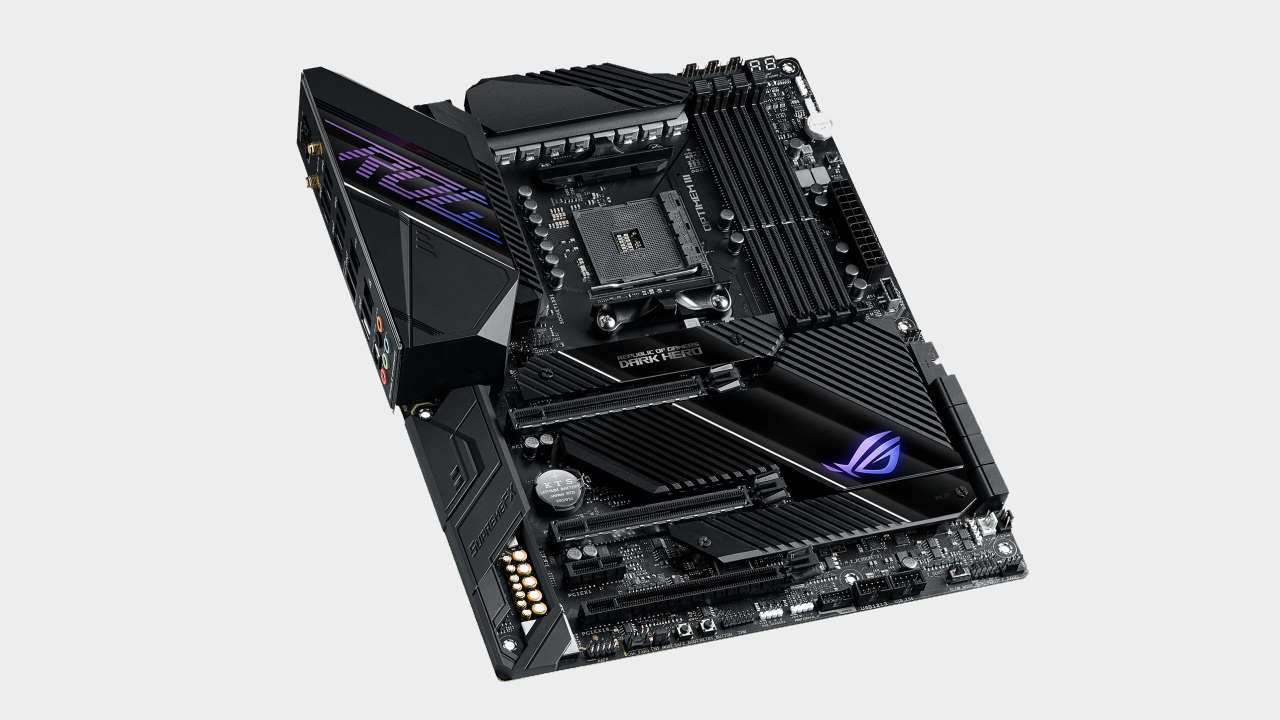
Socket - AM4 Socket
CPU support - AMD Ryzen™ 5000 Series/ 4000 G-Series/ 3000 Series/ 3000 G-Series/ 2000 Series/ 2000 G-Series
Storage - 3x M.2; 8x SATA
USB - Up to 5x USB 3.2 Gen 2, 10x USB 3.1 Gen 1, 4x USB 2.0
Networking - 802.11ax 2.4Gbps Wi-Fi; Intel I211-AT 1G & Realtek RTL8125 2.5G LAN
Audio - Realtek ALC1220 7.1 Channel HD Audio
Form factor - ATX
You get eight SATA ports, and wired networking is provided by an Intel I211AT 1G and Realtek RTL8125 2.5G controllers. 5G would have been nice but having put up with close to 20 years of Gigabit, 2.5G is still welcome! There’s also Intel 802.11ax WiFi on board so there are plenty of networking options.
The VRM has been upgraded over that of the regular Hero. The power stages are now rated for 90a, up from 60a which bring it in line with some of the other premium X570 boards. Even if you’re into smashing out benchmarks on LN2 (and this board will see plenty of that in the hands of overclockers), it will handle the punishment with ease. The heatsinks are big and chunky affairs.
The rear IO is packed out. If you need extra USB ports for that head massager or plasma ball, there are few better equipped boards. There are no less than eight USB 3.2 Gen 2 ports, one of which is Type-C. These are joined by four USB 3.2 Gen 1 ports. There are also BIOS clear and flashback buttons, the LAN and WiFi antenna ports, and the usual set of audio ports including S/PDIF. The IO shield is preinstalled, which is blessedly now becoming standard practice on decent motherboards.
The performance differences between boards with otherwise identical partnering components is usually very small. That's particularly true as we’re now several generations in and any BIOS niggles in the X570 chipset have been well and truly tuned out. A lot of the time variability can simply come down to a margin of error.
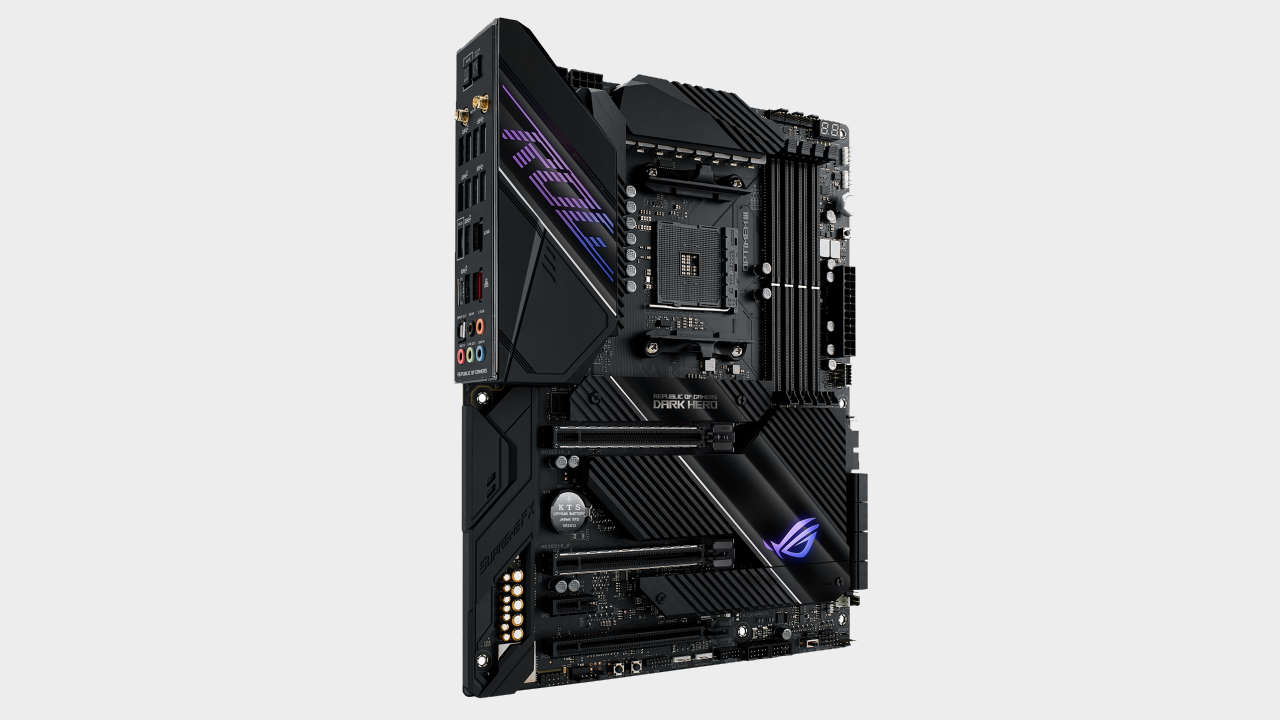
System performance
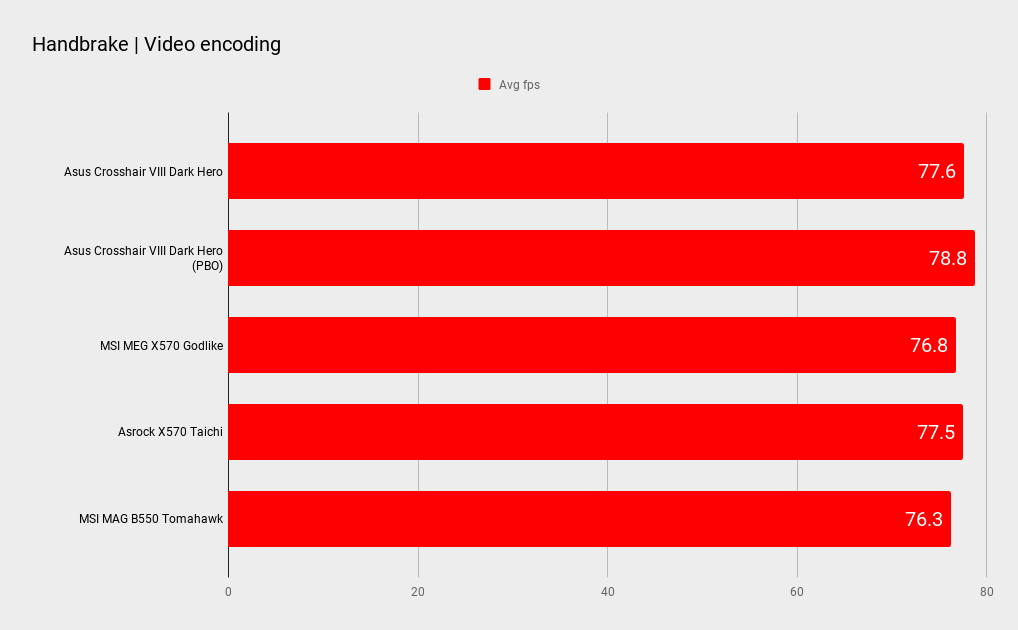
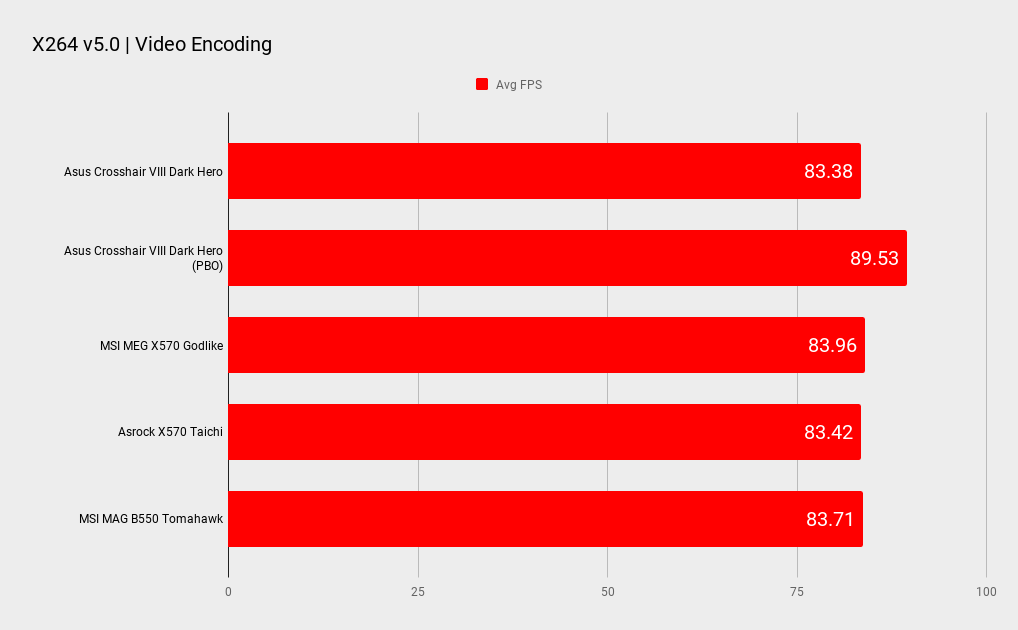
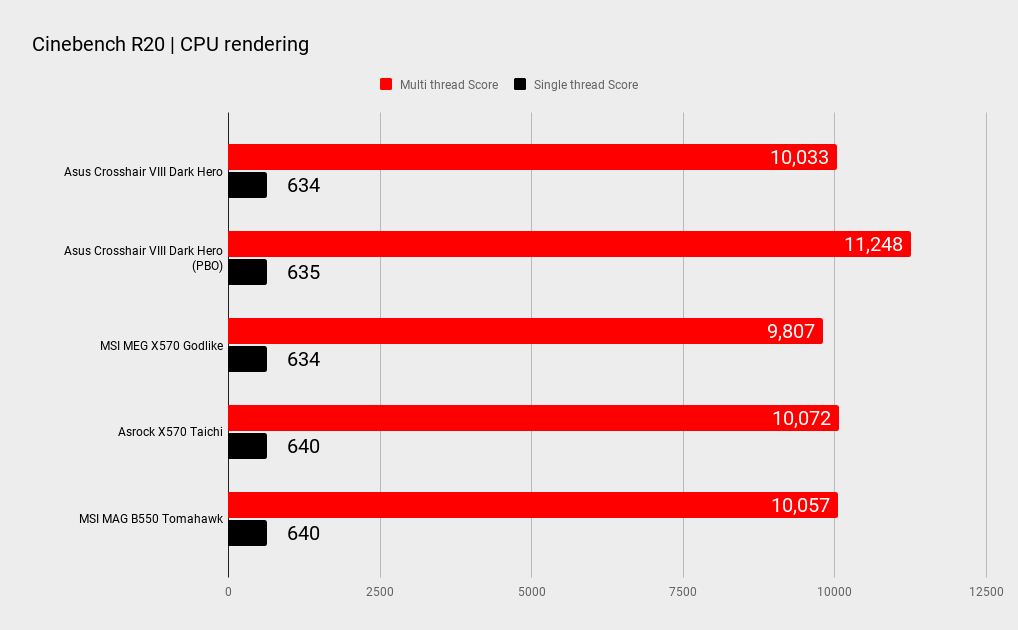
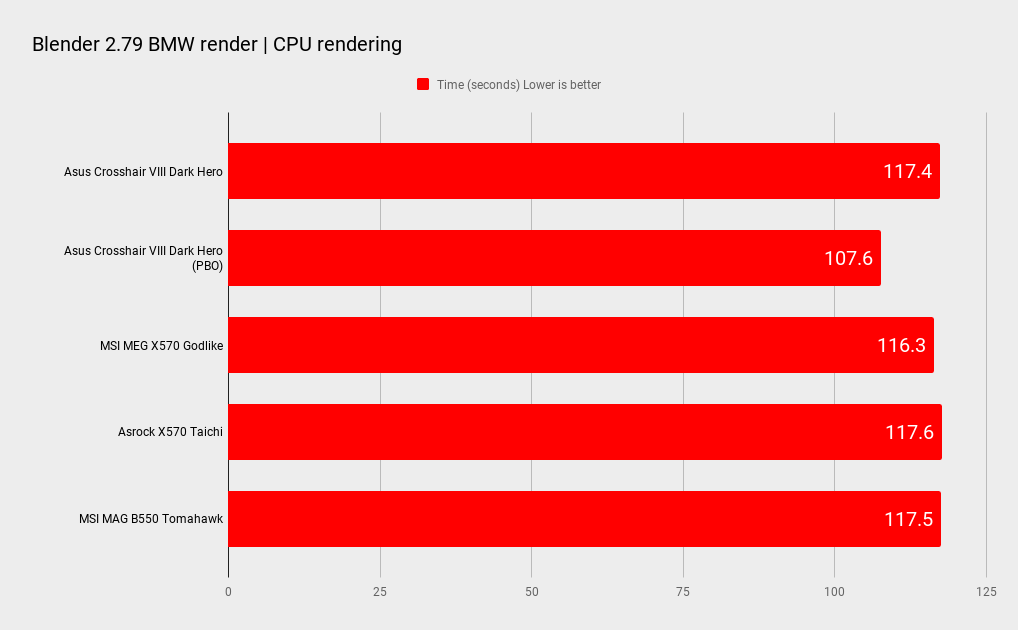
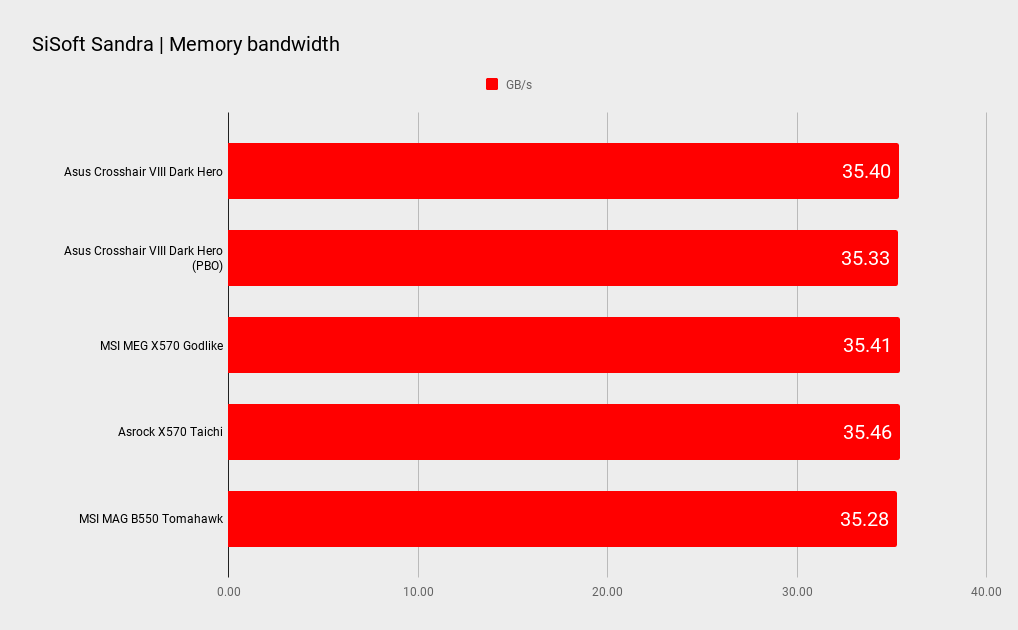
Gaming performance
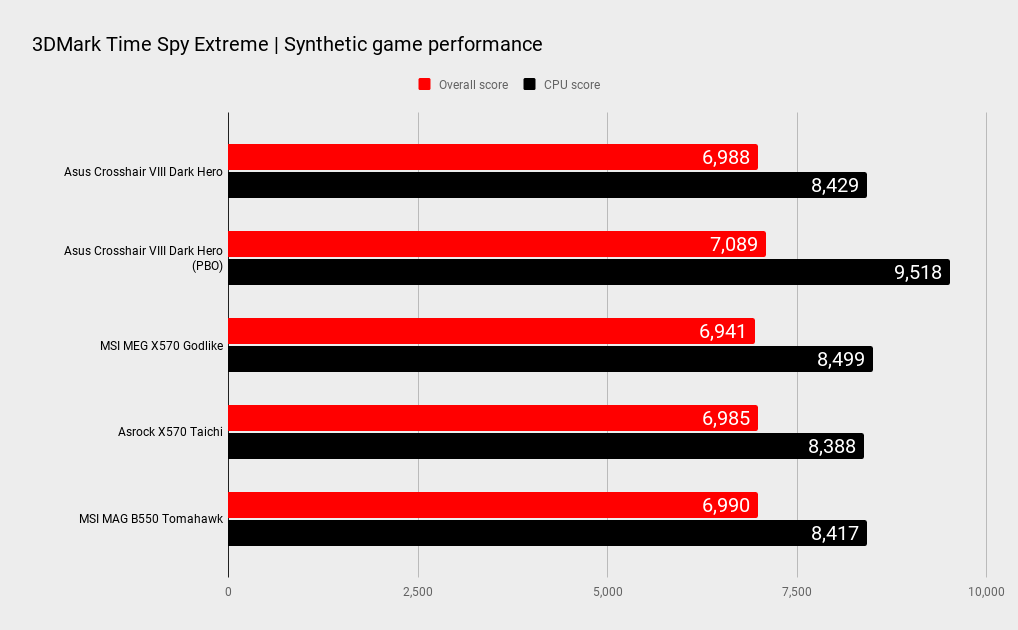
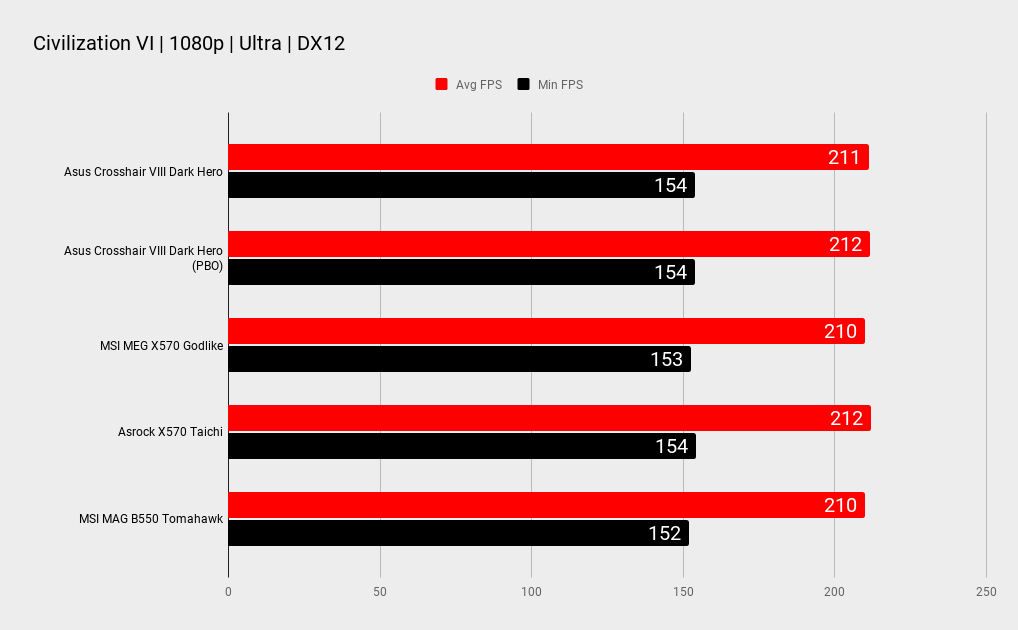
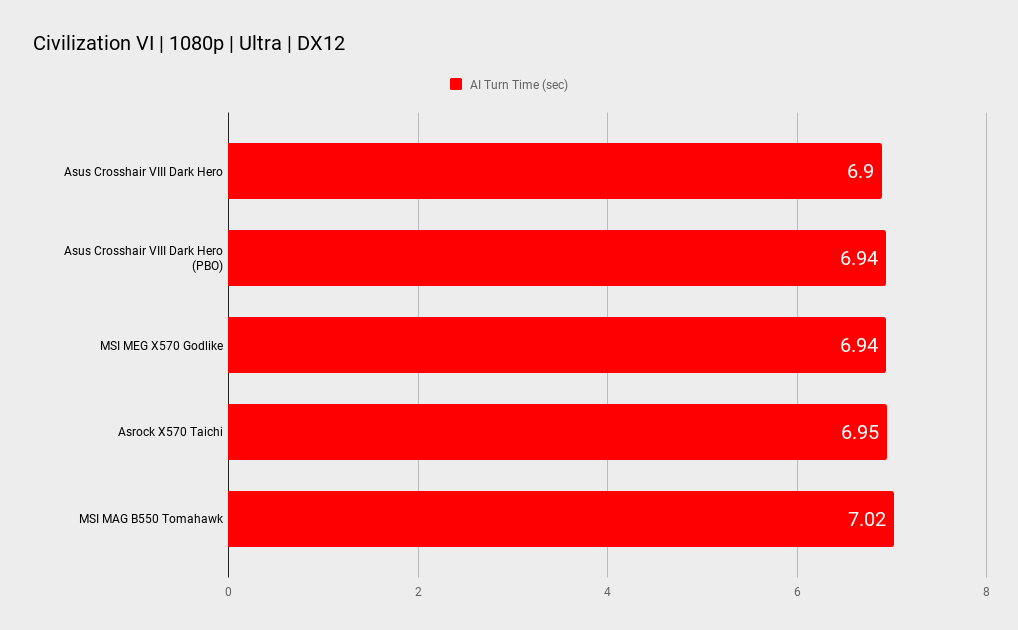
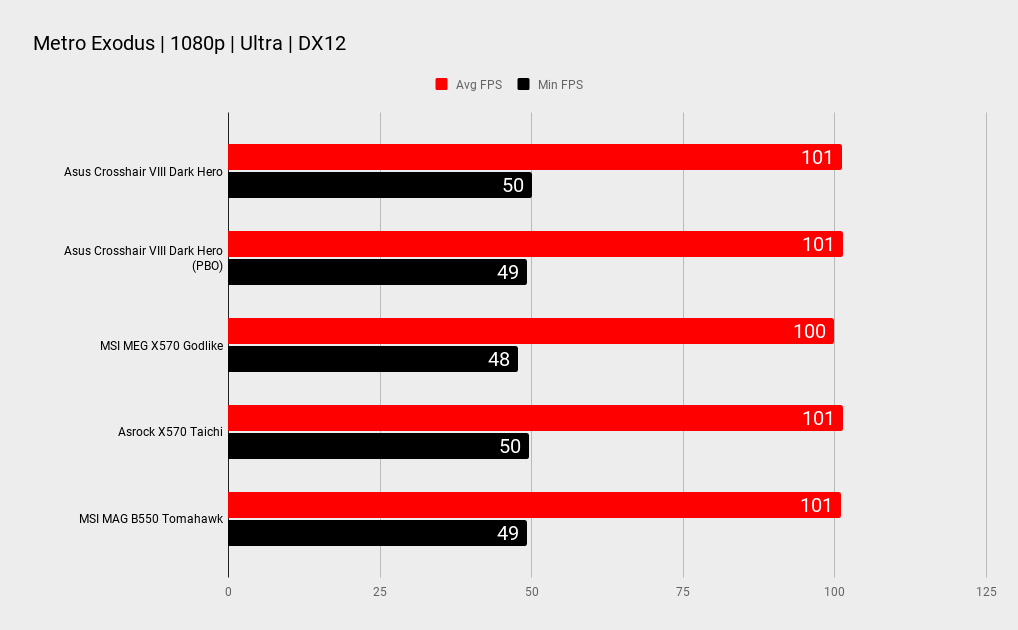
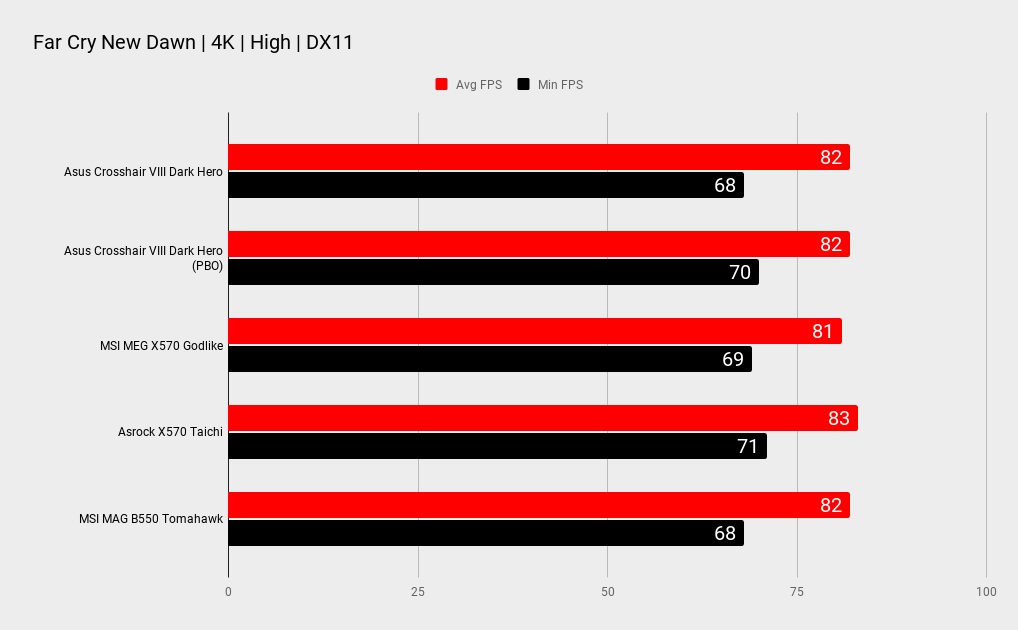
The AMD Ryzen 9 5950X we used for testing is highly cooling dependent as a thing; something as simple as an improperly configured AIO pump led to some initially below average results. Once that was sorted though, it’s clear that a Ryzen 9 5950X paired with a quality board like the Dark Hero can really shine whether you overclock it or not. It must be stated though that If you’re a pure gamer, the AMD Ryzen 7 5800X or AMD Ryzen 5 5600X chips are a better option.
Our 5950X sample was easily capable of benchmarking at 4.5GHz with all cores loaded, but pushed anywhere beyond this, you’d need top spec CPU cooling, though the board itself doesn’t even break a sweat with this kind of load.
An easier method than manual overclocking, however, is to simply enable the AMD Precision Boost Overdrive (PBO). With this enabled, our sample would still hit 4.5GHz on all cores, though more typically it settled at 4.4GHz. Importantly, it leaves lightly threaded boosting enabled and, as you can see in the benchmarks, you get a big multi threading boost and lose nothing under single threaded or gaming loads.
We were also able to reach an Infinity Fabric clock of 2,066MHz, which combined with a 1:1 memory clock results in DDR4-4133 with tight timings. That's not something we've been able to achieve with other Ryzen 5000 silicon or other boards so far. The Dark Hero was bootable with extra SoC and CCD voltage even higher than this.
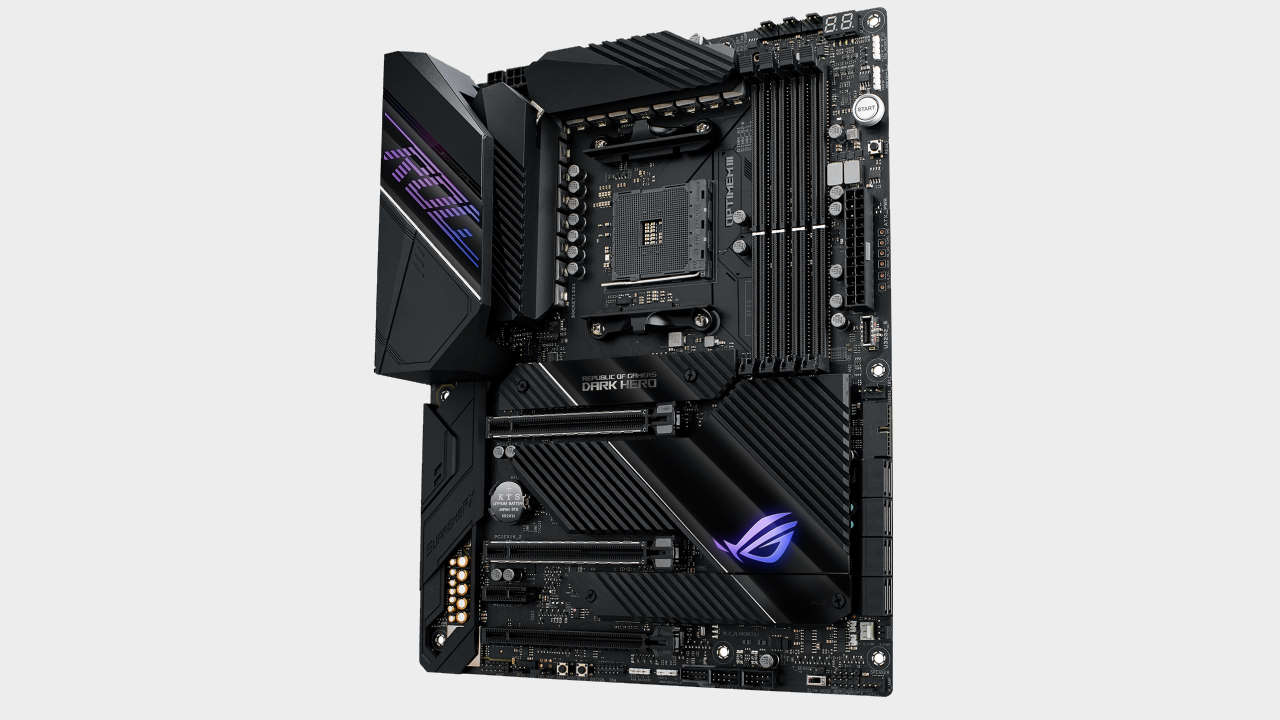
That's worth repeating: We have not been able to achieve this on any other motherboard at the time of writing, though the latest AGESA updates may improve Infinity Fabric clocks on other boards. It’s always nice to get that feeling from a solid motherboard: Oh! I've done a thing that surprisingly worked!
So, what is it that makes a great motherboard? Features are important, as is a stable and refined BIOS, value for money, a good design, but sometimes it’s the intangible. Sometimes it's that the damn thing just works. Motherboard testing is often one of the most painful things a tech journalist has to do. With some boards you have to fight it to get it to do what you want, or expect it to, or have to or crank up some voltage setting to a level you don’t really want to, but the Dark Hero just seemed to boot first time, even as we played with the memory clocks and timings and the Infinity Fabric.
The Crosshair VIII Dark Hero might not be the best AM4 motherboard ever made, we’d have to review a few hundred boards to make that claim, but it’s an easy claim to make that the Dark Hero is certainly one of the best AM4 motherboards we've ever tested. Time and months of user feedback will determine if the Dark Hero assumes a position as one of the truly legendary ROG motherboards, but we wouldn’t bet against that happening.
If you're after a stable and refined motherboard to extract every last drop of performance out of your CPU and memory, this is the board for you.

Chris' gaming experiences go back to the mid-nineties when he conned his parents into buying an 'educational PC' that was conveniently overpowered to play Doom and Tie Fighter. He developed a love of extreme overclocking that destroyed his savings despite the cheaper hardware on offer via his job at a PC store. To afford more LN2 he began moonlighting as a reviewer for VR-Zone before jumping the fence to work for MSI Australia. Since then, he's gone back to journalism, enthusiastically reviewing the latest and greatest components for PC & Tech Authority, PC Powerplay and currently Australian Personal Computer magazine and PC Gamer. Chris still puts far too many hours into Borderlands 3, always striving to become a more efficient killer.
